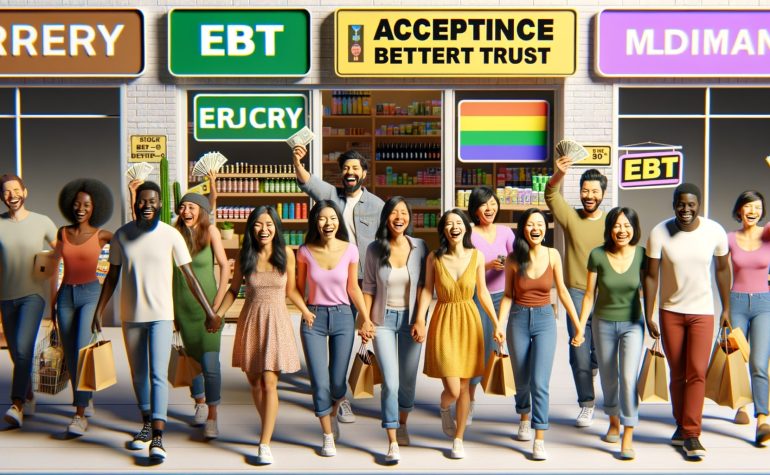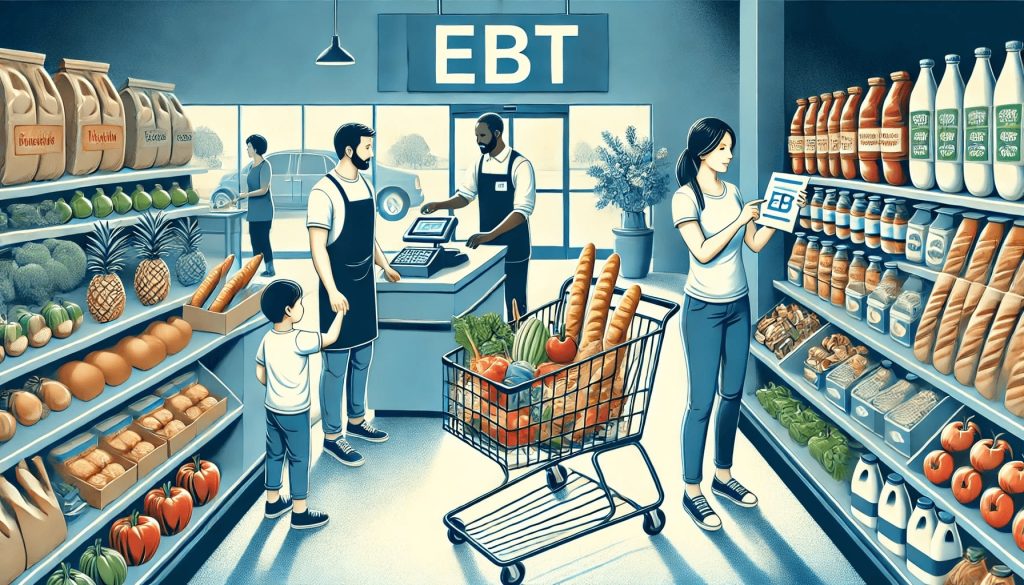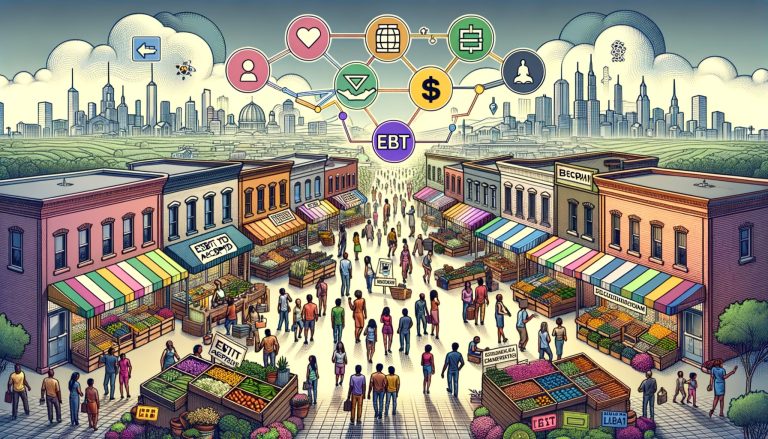
By manoj November 25, 2024
Community trust is a cornerstone of successful businesses, especially in areas where strong relationships between stores and local residents contribute to economic stability and social cohesion. One way businesses can build and strengthen this trust is by accepting Electronic Benefit Transfer (EBT) payments. EBT, used primarily for programs like the Supplemental Nutrition Assistance Program (SNAP), allows eligible individuals and families to access government-funded food assistance.
For retailers, accepting EBT is more than a business transaction—it’s a gesture of inclusivity, support, and recognition of diverse customer needs. This article explores how accepting EBT payments fosters community trust by addressing food insecurity, promoting inclusivity, and positioning stores as vital community resources. It also provides insights into the benefits, implementation process, challenges, and strategies for maximizing the impact of EBT acceptance.
Understanding EBT and Its Community Impact

Electronic Benefits Transfer (EBT) plays a pivotal role in ensuring that vulnerable populations can access basic necessities. It is a cornerstone of various government aid programs aimed at reducing poverty and fostering equality. In this section, we examine the fundamentals of EBT, its workings, and its importance in supporting communities.
What is EBT and How Does It Work?
Electronic Benefit Transfer (EBT) is a digital system that distributes benefits from government assistance programs like SNAP directly to recipients through a card. This card functions similarly to a debit card and is used to purchase eligible food items at authorized retailers. The EBT system simplifies benefit distribution and ensures that funds are used specifically for approved purposes, reducing fraud and enhancing accountability.
EBT has revolutionized food assistance programs by making them more accessible and secure. By accepting EBT, stores enable families to meet their basic nutritional needs with dignity, contributing to a healthier and more resilient community.
Key Features of EBT
- Ease of Access: Funds are automatically loaded onto EBT cards each month, ensuring beneficiaries have continuous access without manual intervention.
- Security: PIN-protected transactions reduce the risk of fraud and unauthorized use.
- Wide Acceptance: EBT is accepted at various retail locations, including grocery stores, farmers’ markets, and convenience stores.
Programs Supported by EBT
- Supplemental Nutrition Assistance Program (SNAP): Helps families purchase nutritious food.
- Women, Infants, and Children (WIC): Provides nutritional support for pregnant women, new mothers, and young children.
- Temporary Assistance for Needy Families (TANF): Offers cash assistance for essential non-food items.
The Importance of EBT in Addressing Food Insecurity

Food insecurity is a pervasive issue affecting millions of households. EBT programs, particularly SNAP, serve as lifelines, ensuring that vulnerable populations can consistently access nutritious food. This, in turn, helps improve public health, educational outcomes, and overall community well-being.
Reducing Hunger and Poverty
EBT directly combats hunger by enabling families to buy groceries without financial strain. It also reduces poverty levels by supplementing household income, freeing up resources for other necessities like healthcare and education.
Promoting Healthier Lifestyles
Programs like SNAP encourage beneficiaries to purchase healthy foods, including fresh fruits and vegetables. This reduces reliance on inexpensive, low-nutrition options and improves long-term health outcomes.
Supporting Dignity and Inclusion
Unlike traditional food stamps, EBT cards closely resemble standard debit cards. This modern system reduces stigma, allowing users to shop with dignity and confidence.
How EBT Acceptance Builds Community Trust
Accepting EBT payments sends a strong message about a business’s values and priorities. It demonstrates a commitment to inclusivity, equality, and social responsibility. In this section, we explore how EBT acceptance fosters community trust, strengthens business-customer relationships, and positions retailers as community allies.
Providing Accessibility and Inclusivity
EBT acceptance sends a powerful message that your store values every customer, regardless of their financial circumstances. It ensures that low-income households feel welcome and respected, fostering a sense of belonging within the community. This inclusivity builds trust and strengthens relationships between stores and local residents.
Alleviating Stigma Around Government Assistance
For many families, using government assistance programs can carry a sense of stigma. Stores that create a welcoming environment for EBT users play a vital role in normalizing these transactions. Training staff to handle EBT transactions with professionalism and respect further reduces stigma, allowing customers to shop with dignity.
Strengthening Social Bonds
When stores support initiatives that address community needs, they contribute to a sense of shared responsibility and mutual care. Accepting EBT is one such initiative that not only helps families in need but also inspires other businesses and organizations to play their part in fostering community well-being.
Strengthening Relationships with the Community
EBT acceptance helps businesses establish deeper connections with their local communities. It positions them as key contributors to community welfare and enhances their role as trusted partners in addressing local needs.
Building Customer Loyalty
By addressing the needs of low-income families, businesses foster customer loyalty. Satisfied customers are more likely to return, recommend the store to others, and view the business as an integral part of the community.
Supporting Community Initiatives
Many retailers that accept EBT also participate in community programs such as food drives, nutritional education workshops, and partnerships with local charities. These initiatives amplify their positive impact on the community.
Economic Benefits of EBT Acceptance
Beyond its social impact, EBT acceptance also offers tangible economic benefits for businesses. It broadens the customer base, boosts revenue, and contributes to local economic growth. This section explores the financial advantages of EBT and its role in driving business success.
Expanding Your Customer Base
Accepting EBT allows stores to serve a broader audience, including low-income families who rely on SNAP benefits. With over 40 million Americans participating in SNAP, this represents a significant and consistent customer demographic. Expanding your customer base through EBT acceptance ensures steady foot traffic and boosts sales.
Supporting Local Economies
When EBT funds are spent at local stores, the money circulates within the community, supporting local economies and creating a ripple effect of economic stability. Stores that accept EBT become key players in strengthening the financial well-being of the areas they serve.
Enhancing Community Reputation
By accepting EBT, stores demonstrate a commitment to inclusivity and social responsibility. This enhances their reputation as community allies, fostering goodwill among customers who appreciate businesses that support diverse needs. This positive perception translates into long-term loyalty and advocacy.
Contributing to Local Economic Growth

EBT programs inject federal funds directly into local economies, benefiting both businesses and the broader community. By accepting EBT, retailers play an active role in sustaining economic vitality.
Stimulating Local Spending
Every dollar spent through EBT circulates within the community, supporting local businesses, suppliers, and service providers. This ripple effect strengthens the local economy.
Supporting Job Creation
Increased customer traffic and sales resulting from EBT acceptance can lead to job creation, benefiting the community even further.
Overcoming Challenges in EBT Implementation
While EBT acceptance offers numerous benefits, its implementation may present challenges, including technical, operational, and regulatory hurdles. This section provides actionable solutions to help businesses overcome these obstacles.
Addressing Technical Issues
Like any electronic system, EBT transactions can occasionally encounter technical difficulties. Regular maintenance of your POS system and having a reliable customer support contact for troubleshooting can minimize disruptions.
Navigating Compliance and Audits
Retailers authorized to accept EBT are subject to periodic USDA audits to ensure compliance with program rules. Maintaining accurate records of transactions, inventory, and sales is essential for passing audits and avoiding penalties.
Reducing Stigma
Despite the positive impact of EBT programs, some customers may feel uncomfortable using their benefits in public. Stores can create a supportive atmosphere by training staff to handle EBT transactions discreetly and respectfully, fostering a judgment-free shopping experience.
Ensuring Regulatory Compliance
EBT programs are governed by strict regulations designed to prevent fraud and misuse. Businesses must stay informed and adhere to these guidelines to maintain compliance and protect their reputation.
Understanding Eligibility Requirements
Retailers must comply with federal and state regulations regarding the sale of eligible items. Staying informed about these requirements is critical to avoid penalties.
Implementing Fraud Prevention Measures
Robust security protocols, such as transaction monitoring and regular audits, help prevent fraud and ensure the integrity of EBT transactions.
Steps to Implement EBT Acceptance in Your Store
Meeting USDA Eligibility Requirements
To accept EBT, your store must meet specific criteria set by the United States Department of Agriculture (USDA). These requirements include:
- Stocking Eligible Items: Your inventory must include staple food categories such as fruits, vegetables, dairy, bread, and meat.
- Sales Composition: At least 50% of your total sales must come from SNAP-eligible items.
Ensuring compliance with these requirements is the first step toward EBT authorization.
Applying for EBT Authorization
The application process involves:
- Registering on the USDA Website: Create an account on the USDA Food and Nutrition Service (FNS) portal.
- Submitting Documentation: Provide business details, including your tax identification number, business license, and inventory information.
- Completing the Application: Fill out the application form accurately and submit it for review.
The USDA typically takes 45–60 days to process applications. During this time, they may request additional documentation or conduct a site visit to verify compliance.
Setting Up EBT-Compatible Technology
Once approved, equip your store with a point-of-sale (POS) system that supports EBT transactions. Train your staff to use the system efficiently and ensure that it integrates seamlessly with your existing operations.
FAQs
Q1: What items can customers purchase with EBT?
Customers can use EBT benefits to buy staple food items like fruits, vegetables, meat, dairy, and bread. Non-food items, alcohol, vitamins, and hot prepared foods are not eligible.
Q2: How long does the EBT application process take?
The USDA typically takes 45–60 days to review and approve applications, depending on the completeness of your documentation.
Q3: Can stores charge additional fees for EBT transactions?
No, retailers are prohibited from charging extra fees for EBT transactions. Doing so violates USDA guidelines.
Q4: What should stores do if their POS system encounters issues with EBT transactions?
Ensure your staff is trained in basic troubleshooting and have a reliable support contact for your POS provider to resolve technical issues quickly.
Q5: How can stores reduce stigma associated with EBT usage?
Train staff to handle EBT transactions with respect and professionalism. Create a welcoming environment that normalizes the use of government assistance programs.